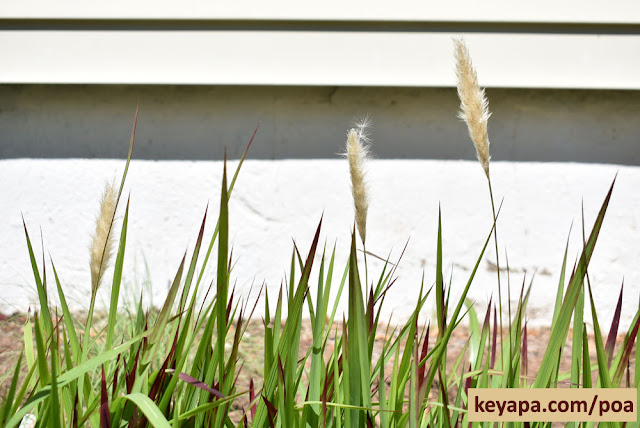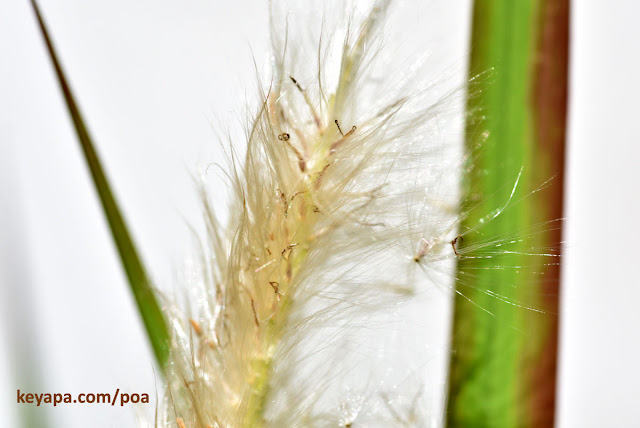"The Story of Grasses - Celebrating Our Grasslands and other Open Ecosystems"
Monday, June 1, 2020
The fluffy seeds of my Imperata cylindrica 'Red Baron' (Japanese Blood Grass)
In an earlier post, I had mentioned that my Imperata cylindrica (Japanese Blood Grass or JBG) had produced flowering spikes, which was a very rare event indeed.
On Saturday I was surprised to discover that the three inflorescence seemed to have produced the distinctive seeds of wild cogon grass. In fact, as I watched in disbelief, the wind was blowing the fluffy seeds from the seedheads like so many tiny dandelion seeds.
I. cylindrica does not self-pollinate, so the three different spikes (on 3 different plants, though I was thinking most of my plants are clones) must have been exchanging pollen due to the wind.
Each "seed" was composed of a single fertile floret, the caryopsis enclosed by the glumes,with silky hairs coming out of the callus of the spikelet in order to facilitate being blown by the wind.
Researchers in Maryland have discovered that JBG can produce viable seeds, so I immediately cut off the seedheads and stored them in plastic bags. I also collected some of the seeds and planted them in soil, simply because I am curious whether the seeds my grass had produced really are viable.
More notes to come later about this rather interesting development.
Subscribe to:
Post Comments (Atom)




No comments:
Post a Comment